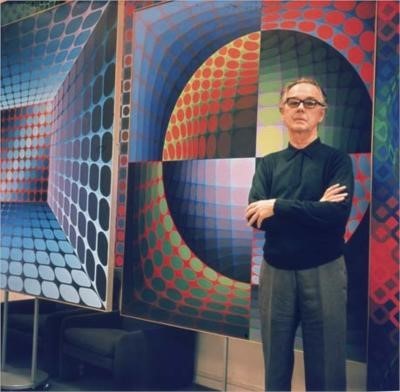

OP - ART
Op-art, or optical art, represents a new direction in the modern visual arts. It is based on the strong contrasts between black and white, flat and spatial geometric shapes, but most of all on optical illusions.
Op-art transformed the perception into an underlying principle in the existence of creation. The basic method is the use of abstract geometric shapes and of colored surfaces in order to generate in the eye of the beholder an illusion of movement or vibration, through the technique of optical illusions. The optical illusion is initially generated within our visual perception: the image exists not only on paper, but also in the reality, in the eyes and in the brains of the people who watch it.
The term „op-art” was initially coined in the Time Magazine in October, 1964, but one of the first manifestations which announced the new movement and its main representatives, Victor Vasarely and Jesus-Rafael Soto – was the 1995 exposition from the Denise René Art Gallery in Paris.
Victor Vasarely (April 9, 1906 – March 15, 1997) was a Hungarian-French artist, widely-accepted as the „father” and leader of the Op-art artistic movement. He is one of the artists whose name is famous around the world.
Vasarely inaugurated foundations and created museums, thus making his works accessible to an extremely wide audience. He knew how powerful was the human’s wish to own material things, this is also the reason why he developped his printing techniques (bringing aesthetic and artistic value to the reproductions of his works on silk surfaces). Vasarely also created computerized programmes in order to model his works. The artist is of the opinion that the compositional elements can be (re)arranged in millions of variations and believes that his works can be available for everyone, at a reasonable price. He considered that it is possible, by using basic geometrical shapes (such as circle, square, ellipse, rhombus) and the fantastic richness of the chromatic scale, for each person to create a masterpiece influenced by the personal character and individuality.
In 1960 Vasarely said "The end of personal art for a sophisticated elite is near, we are heading straight towards a global civilization, governed by Sciences and Techniques. We must integrate visual sensibility into a correct world” … "The art of tomorrow will be a common collective treasure or it will not be art at all.">
(text quoted from http://arslonga.dk/Budapest_Photos_Victor_Vasarely.htm )